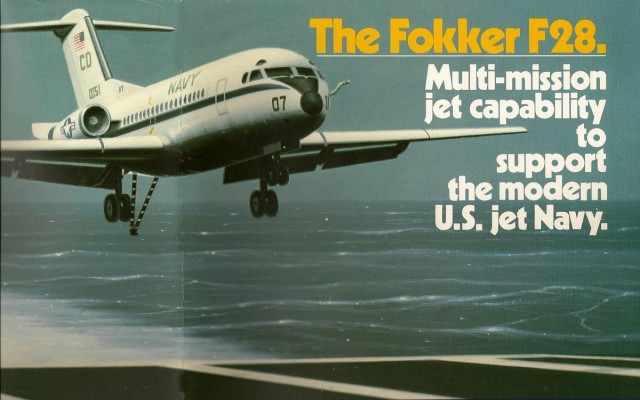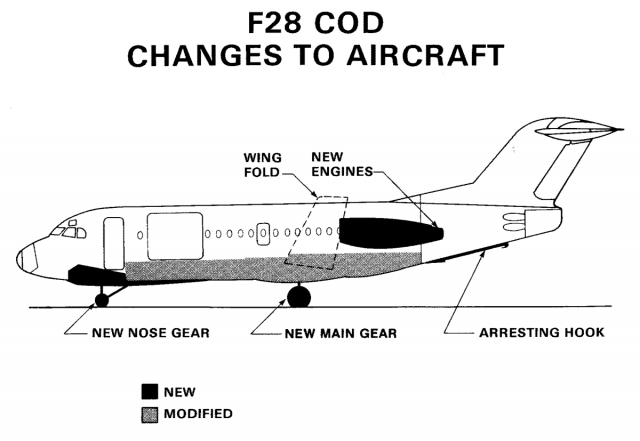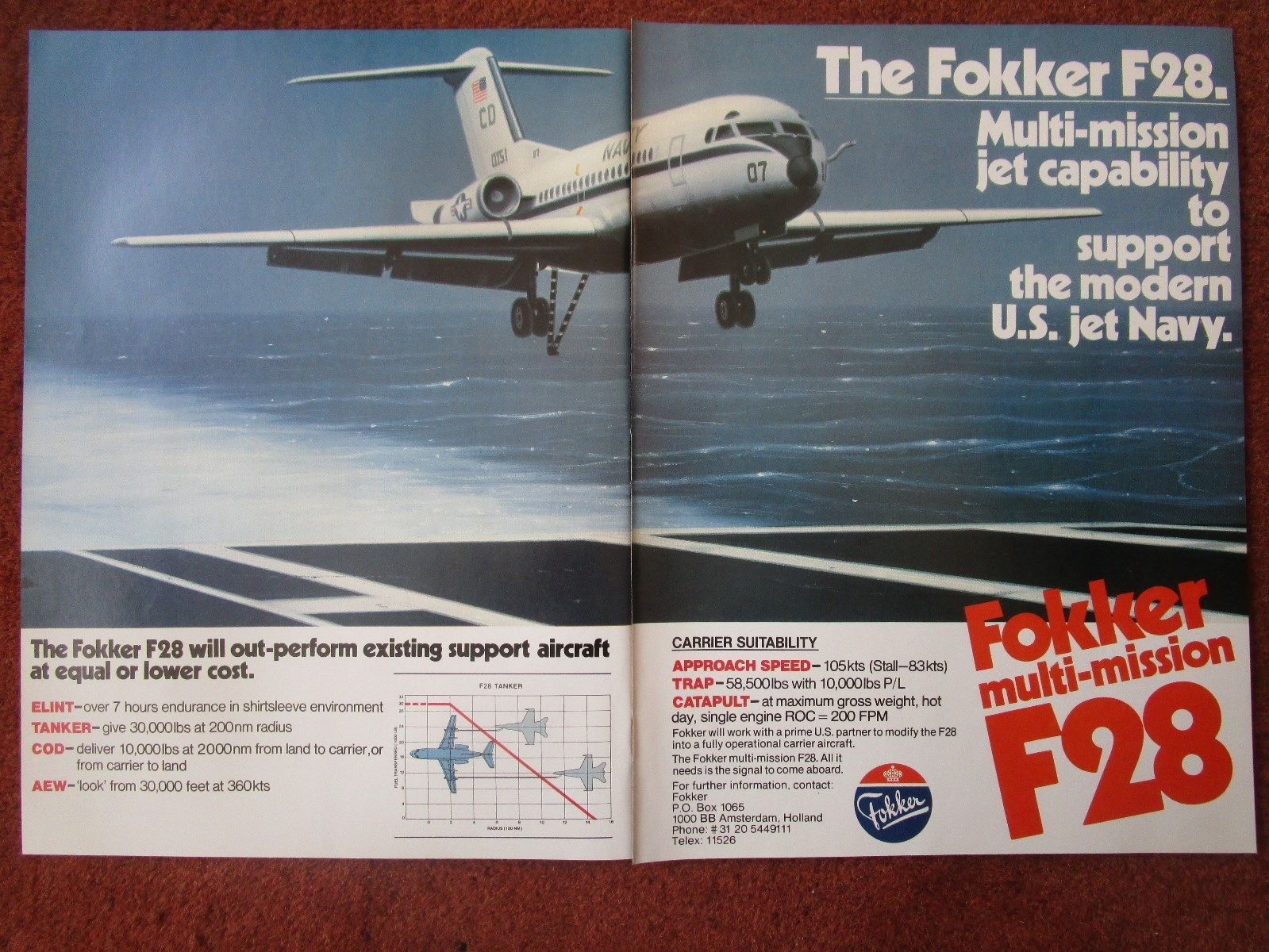Carrier tough
In the early 1980’s, the US Navy put out a request for a new COD aircraft through the MMVX program. Various manufacturers tendered proposals, including Grumman, with an improved version of the C-2. Lockheed offered a new, turbofan design derived from the S-3 Viking, and a few unusual proposals.
Fokker Aircraft, of the Netherlands, proposed a derivative of their successful F28 regional airliner, called the F28 Mk.5000. McDonnell Douglas proposed a navalized version of the venerable DC-9-10 airliner, and lastly, it appears as if Boeing proposed a carrier modification of the 737-200. While it might seem odd operating an aircraft the size of an airliner off of the small flight deck of an aircraft carrier, the concept was proven as possible nearly 20 years before the start of the MMVX program.
In November 1963, the Navy conducted tests to see if the idea of a “Super COD” was possible. These dramatic tests saw a crew, led by Lt. James Flatley, land a KC-130 on the deck of the USS Forrestal 21 times with no tailhook, and take off with no catapult assistance. These tests, while a success, proved that the C-130 was too large of an aircraft to routinely operate off of a carrier, and the Navy in the end procured the C-2.
For this story, I want to take a closer look at the proposed airliners which were made to handle carrier operations.

An artist’s representation of the F28 COD proposal landing on a carrier, from a Fokker sales brochure – Image: Fokker
With the Fokker MMVX proposal, a special STOL (Short Take Off and Landing) version of the F28 was penned. It featured redesigned landing gear that could extend to raise the nose of the aircraft, thus increasing the wing’s angle of attack to improve takeoff distance during a catapult launch, a tailhook, and a slightly redesigned wing that could fold for easier storage on the deck of the ship.

Another drawing from a Fokker sales brochure, highlighting the modifications to enable carrier operations – Image: Fokker
Instead of the standard Rolls Royce Spey turbofans that powered the standard F28, Fokker proposed to replace the engines with either Rolls Royce Tays from the F100, or a non-afterburning variant of the GE F404 turbofan that powered the F-18 Hornet.
Another feature that Fokker proposed was adding refueling pods to underwing hard points. This capability would allow the plane to refuel two fighters at once, doubling the previous carrier tanker’s capacity. Fokker went as far as demonstrating the performance of a stock F28 to the US Navy on a simulated carrier deck, but orders were not forth coming.
